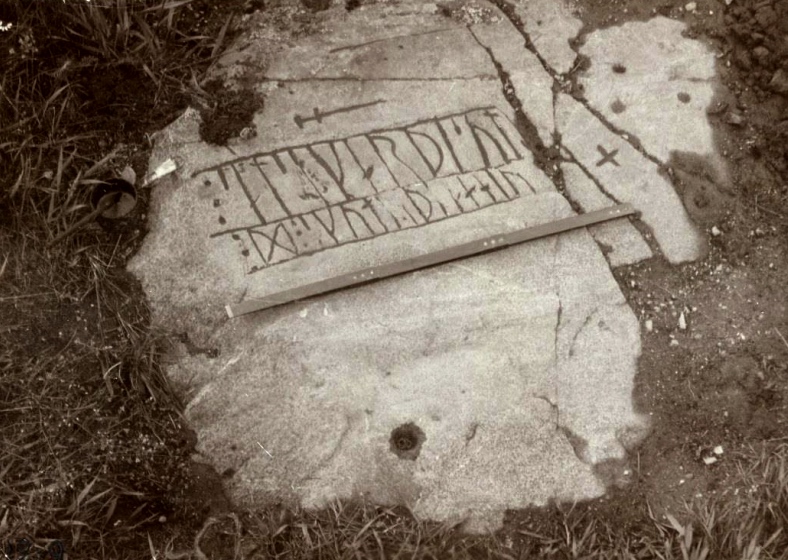Östergötland 43 is a super cool runestone from Ingelstad in Sweden. It's dated to the mid 800s A.D. and features a lone Elder Futhark "D" rune (ᛞ) sitting amidst an otherwise Younger Futhark inscription.
Elder Futhark was the runic alphabet of the Proto-Germanic and Proto-Norse periods in Scandinavia, in use from approximately 1 A.D. until some time in the 700s A.D. By the canonical beginning of the Viking Age with the attack on Lindisfarne in 793, the transition to the Younger Futhark had already completed.
Yet in Ög 43 we appear to see some remnants of that transition, and indeed this may be one of the last attestations of Elder Futhark in Scandinavia. The reconstructed name of the ᛞ rune in Elder Futhark is *dagaz "day". This word became dagaʀ in Proto-Norse and ultimately dagr in Old Norse. It retained its meaning of "day," but also became a relatively common male first name. Although the full meaning of the Ög 43 inscription is not perfectly clear, ᛞ appears to be used as a logographic representation of the name "Dagr". In simpler terms, imagine that your name was "Jay", and you simply wrote it as "J".
The inscription appears to read as follows:
⋮ salsi karþi sul
⋮ D ⋮ skut- - þ--a hiu
In Old Norse this would be read something like:
Sǫlsi gærði sól.
Dagr skut(li?) þætta hjó.
And in English that translates to:
Solsi made a sun.
Dag struck out this skutli?.
The first line likely does not refer to the actual sun but to a sun symbol that was carved near the runes. It is difficult to make out in the picture, but can be seen more clearly in this closeup photo of the symbol. This line gives attribution to a person named Solsi for carving it.
The second line appears to be giving attribution to another person named Dagr for carving some other part of the stone, perhaps the runes themselves, the nearby cross, or even the sword at the top of the inscription. The problem, of course, is with that word skut(li?). Since this line has been damaged, the word is difficult to decipher. There have been various attempts at interpretation, but none are entirely convincing.
This formula wherein two individuals contribute to the creation of a runestone and are both given credit in the inscription is fairly common. In other cases we see it following a pattern more like "Person A cut these runes. Person B colored them."
The sun symbol itself was an important religious symbol in Scandinavia from at least the Bronze Age on down through the Norse period until Christianization. In Norse mythology, the sun is described as a goddess named Sól who is chased around the Earth by a monstrous wolf that will eventually catch and devour her at Ragnarǫk, a cataclysm in which the world is destroyed.
